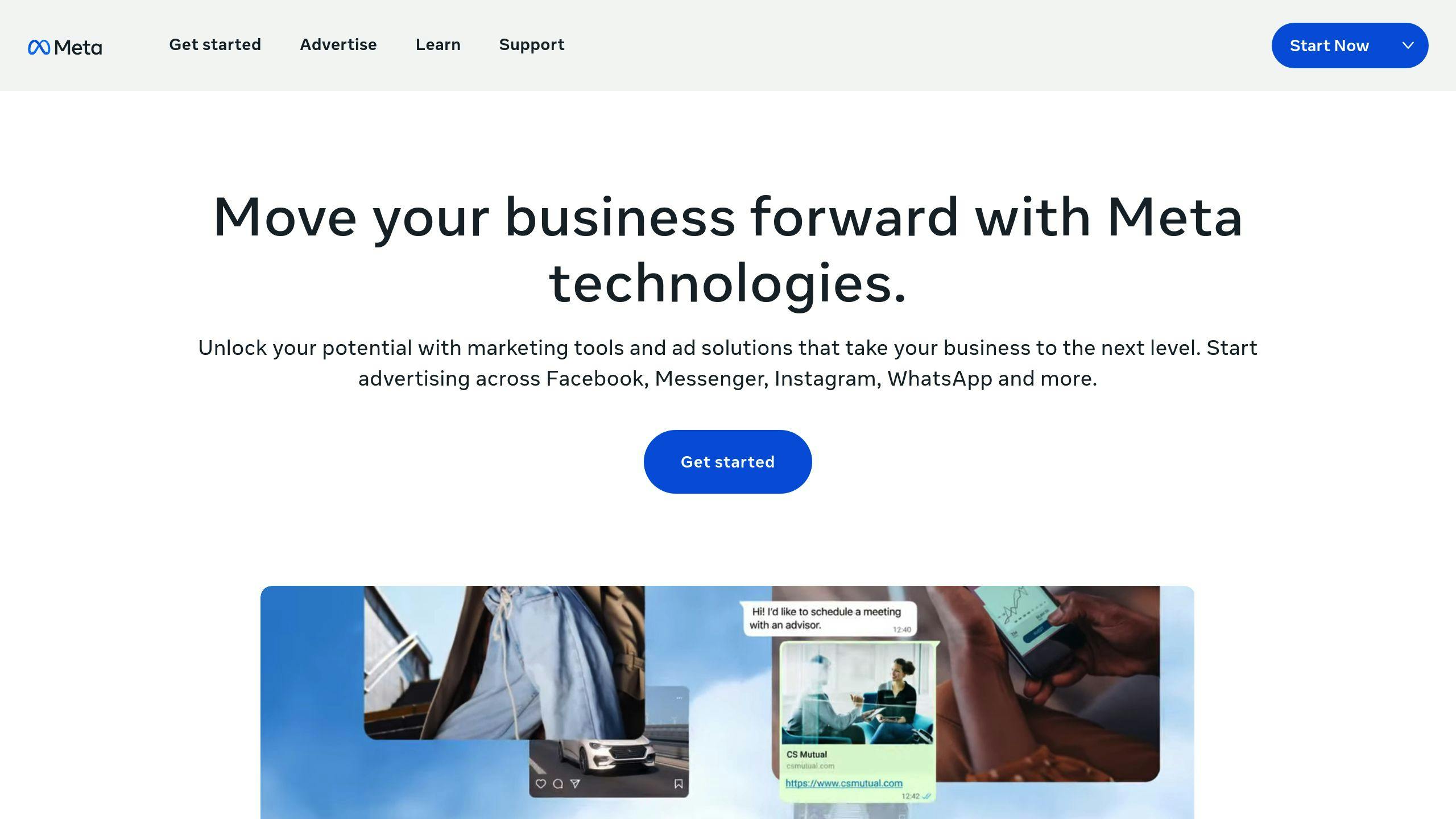Financial advisors can maximize their marketing ROI by focusing on tools and strategies that deliver measurable results. Here’s a quick summary of effective approaches:
- Email Marketing: Yields $36 for every $1 spent. Use platforms like iContact for segmentation, automation, and analytics.
- Lead Generation: Tools like SmartAsset, Kapitalwise, and Wealthtender help acquire quality leads at costs ranging from $20 to $200.
- SEO: Drives organic traffic with returns between 300%-1300%. Focus on long-tail keywords and local SEO.
- Paid Ads: Platforms like Google Ads and Meta Ads allow precise targeting to attract clients, with cost-per-lead rates between $20-$50.
Key Metrics to Track:
- Cost Per Lead (CPL): Typically $20-$500.
- Conversion Rates: Measure how leads become clients.
- Client Lifetime Value (CLV): Estimate total revenue per client.
Budget Allocation:
- SEO & Content: 30-40%
- Email Marketing: 25-30%
- Paid Ads: 20-25%
- Lead Generation: 10-15%
The Financial Advisor's Guide to Getting Better Results with Digital Marketing
Marketing Tools Financial Advisors Should Know
Financial advisors today need a solid set of digital tools to connect with potential clients and grow their practices. Here's a closer look at some key marketing tools that can help boost your results.
Using Email Marketing to Build Client Relationships
Email marketing platforms, like iContact, enable advisors to create personalized campaigns that engage clients and build trust. Features to prioritize include:
- Audience segmentation
- Automated scheduling
- Templates designed for compliance
- A/B testing capabilities
- Performance tracking and analytics
While email marketing is great for nurturing existing relationships, you'll need lead generation tools to connect with new prospects and expand your client base.
Lead Generation Tools for Finding New Clients
Platforms such as Kapitalwise, SmartAsset, and Wealthtender offer tailored lead-generation solutions specifically designed for financial advisors. Here's a quick comparison:
| Platform | Lead Quality | Cost Per Lead | Key Features |
|---|---|---|---|
| SmartAsset | High-intent leads | $150-200 | Geographic targeting |
| Kapitalwise | AI-matched leads | $50-100 | Behavioral analytics |
| Wealthtender | Content-driven leads | $20-50 | Organic integration |
Once you've captured leads, SEO tools can help ensure your practice stays visible to prospects actively searching for financial advice.
SEO Tools to Improve Online Visibility
SEO tools are essential for driving organic traffic and reaching potential clients. Focus on strategies like long-tail keywords that address specific client needs, such as "retirement planning for small business owners" or "wealth management for medical professionals" [5].
Key areas to prioritize:
- Long-tail keyword usage
- Local SEO strategies
- Enhancing content quality
Paid Ads: Google Ads and Meta Ads

Platforms like Google Ads and Meta Ads offer advanced targeting to help you reach the right audience. Key features include:
- Demographic filters
- Geographic targeting
- Interest-based audience selection
- Performance tracking tools
Using AI-powered tools on these platforms can improve ad delivery and boost client conversions. By keeping a close eye on your cost-per-acquisition (CPA), you can ensure your advertising budget delivers measurable growth.
How to Measure and Improve ROI from Marketing Tools
Tracking ROI with the Right Metrics
To get a clear picture of your ROI, focus on key metrics like Cost Per Lead (CPL), Conversion Rate, and Client Lifetime Value (CLV). CPL tells you how much you're spending to acquire each lead (typically between $20 and $500, depending on targeting and quality) [6]. Conversion rates highlight how well those leads turn into paying clients, while CLV estimates the total revenue you can expect from each client over time.
You should also monitor specific performance indicators like email campaign success, landing page engagement, and consultation bookings. After identifying the metrics that matter most, allocate your marketing budget wisely to maximize returns.
Smart Ways to Allocate Your Marketing Budget
A well-planned budget ensures every dollar works toward attracting more leads and clients. Here's a suggested breakdown for your marketing spend:
| Marketing Channel | Suggested Allocation |
|---|---|
| SEO & Content | 30-40% |
| Email Marketing | 25-30% |
| Paid Advertising | 20-25% |
| Lead Generation | 10-15% |
Once your budget is set, focus on creating content that resonates with your audience.
Creating Content That Connects with Clients
Using AI tools like predictive analytics can help you deliver personalized email content, increasing open rates by up to 26% and boosting ROI by 10-30% [2]. Here’s how to craft content that drives results:
- Educational Content: Write guides on topics such as retirement planning, investment strategies, or tax optimization. This builds trust and showcases your expertise.
- Multi-Format Delivery: Use a mix of formats - blogs, infographics, videos, and newsletters - to reach clients on various platforms.
- Compliance-First Approach: Always ensure your content follows regulatory guidelines. Staying compliant not only avoids penalties but also protects your ROI [4].
sbb-itb-e3190ce
Examples of Financial Advisors Achieving ROI Success
Here’s a closer look at how financial advisors have effectively increased their ROI by leveraging various marketing tools.
Email Campaigns That Deliver: SmartWealth Advisors reported a staggering 4,000% return by sending out personalized newsletters and market updates tailored to their audience [4]. This highlights how well-crafted, targeted email content can significantly boost engagement and returns.
Efficient Lead Generation: Morgan Financial Planning kept their lead acquisition costs between $20-$50 - well below typical industry rates - through carefully designed outreach campaigns. This strategy not only tripled their conversion rates but also ensured that acquisition costs remained manageable [6].
SEO Driving Organic Growth: FinancialPlanningLeads.com improved their organic traffic by 65% through search engine optimization. Their success underscores the value of SEO in this space:
"Increased visibility on search engines helps financial advisors attract new leads, build their reputation and generate a higher marketing ROI due to the relatively low level of competition in the field." [3]
Blended Marketing Strategies: Asset-Map combined email marketing with content strategies, achieving $36 in revenue for every dollar spent on email campaigns [1]. Their content approach also helped establish authority and ensured a steady flow of leads.
AI-Powered Targeting: Progressive Wealth Management used AI-driven ad targeting to enhance lead quality, resulting in 26% higher click-through rates and a 10-30% improvement in their overall marketing ROI [2].
These examples show how financial advisors can use specific tools and strategies to achieve impressive results. Up next, we’ll dive into actionable tips to help you apply these tactics in your own practice.
Final Thoughts and Tips for Financial Advisors
Let’s dive into some practical ways to fine-tune your marketing strategy and boost your return on investment.
Focus on High-Impact Channels
Email marketing and SEO are two pillars of growth that deliver strong results. For instance, SmartWealth Advisors achieved a staggering 4,000% return on email campaigns by prioritizing personalized communication [4]. SEO, on the other hand, ensures your long-term visibility. As Proper Expression points out:
"Financial advisors live and die by their reputation, and search rankings are increasingly influential on the overall impression people have of your business." [3]
Make Smart Investments
Allocate resources to tools and strategies that align with your business goals. For example, Progressive Wealth Management used AI-driven targeting to improve lead quality and boost conversions [2]. Look for technologies that directly impact your results without straining your budget.
Rely on Data
Take a page from Morgan Financial Planning, which keeps lead costs between $20-50 [6]. Define clear metrics for success - like lead generation rates, conversion percentages, and acquisition costs - and use those numbers to adjust your approach as needed.
Create Valuable Content
Asset-Map's success combining email marketing with content strategies [1] highlights the importance of offering clients useful materials. Consider producing retirement guides, investment advice, or market updates that showcase your expertise while staying compliant with industry standards [4].
Adopt New Tools Thoughtfully
Stay informed about emerging technologies like AI-powered targeting, which has helped firms achieve 26% higher click-through rates [2]. Choose tools that integrate well with your current strategy and offer measurable benefits without overspending.
FAQs
Do Google Ads work for financial advisors?
Yes, Google Ads can be an effective tool for financial advisors when used as part of a well-thought-out digital marketing plan. It allows for precise targeting of potential clients while keeping cost-per-lead rates manageable, typically ranging from $20 to $50 for quality leads [6].
Here’s why Google Ads can be a smart choice for financial advisors:
Targeted Reach and Content Promotion: Google Ads helps you connect with potential clients through targeted searches. It also provides an opportunity to promote educational content like blog posts or videos, helping to build trust and attract the right audience.
"Financial advisors live and die by their reputation, and search rankings are increasingly influential on the overall impression people have of your business." [3]
Data-Driven Campaign Management: With detailed analytics, Google Ads lets you track key performance indicators like click-through rates and cost-per-click. This makes it easier to refine and improve campaigns over time, ensuring your marketing budget delivers measurable results.
Complementary Role in Digital Marketing: Google Ads works best when paired with other digital strategies. For instance, while it drives immediate traffic, email marketing offers a strong return on investment - $36 for every dollar spent [1]. Meanwhile, SEO helps establish long-term visibility and credibility.
When combined with tools like SEO and email marketing, Google Ads becomes a key part of a broader marketing strategy that can drive meaningful results for financial advisors.


